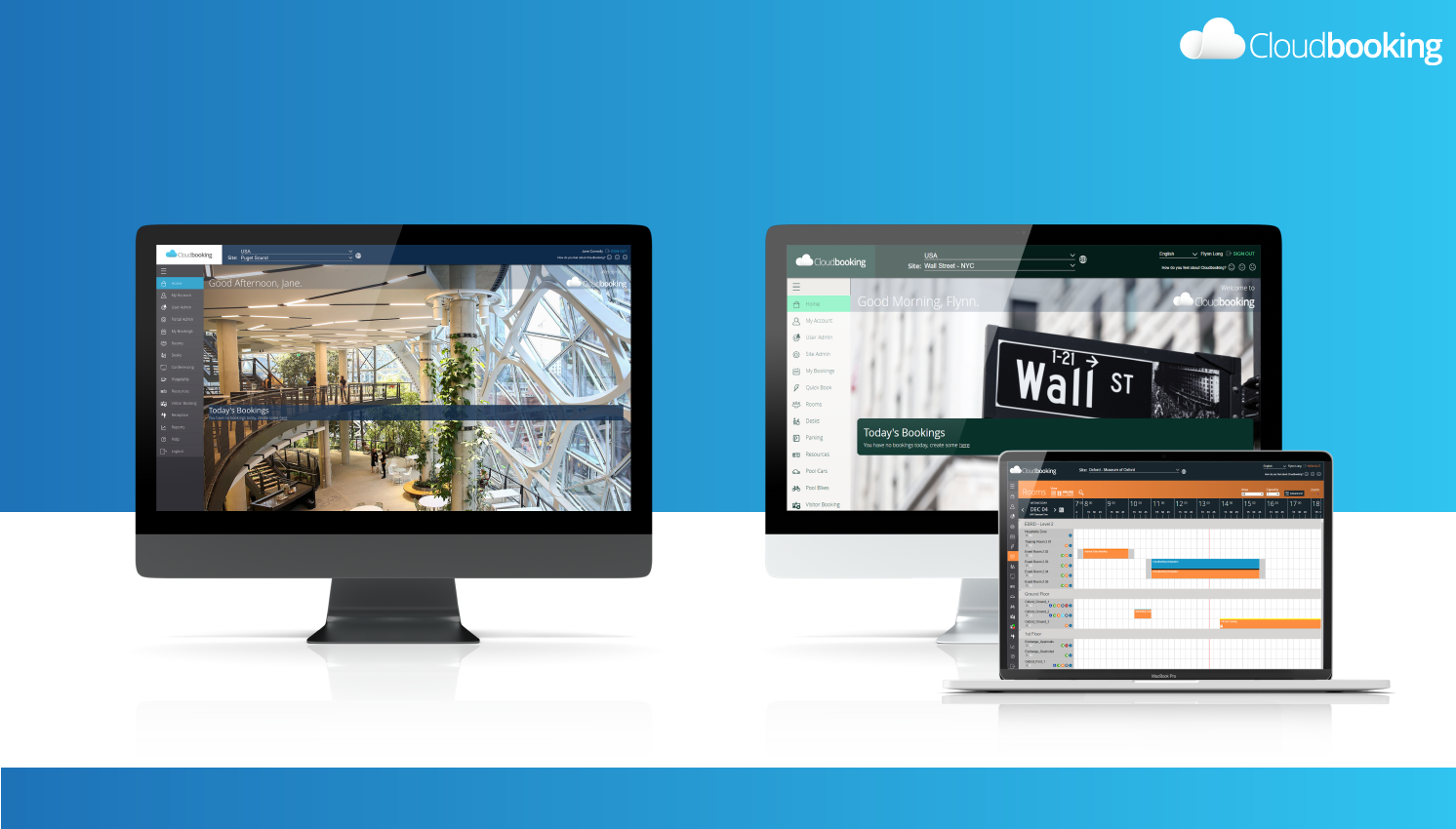
2020 saw the way we work change beyond recognition. The standard nine-to-five office-based activities were immediately halted as the spread of COVID-19 left the standard office space a potential breeding ground for this transmissible virus. Instead, office-based roles became fully remote overnight as work from home orders were enforced nationwide. This thrust remote and hybrid working into the mainstream of society and means that working from home looks here to stay. However, the question remains — what is the future of working from home? Can a home office compete with a modern working environment utilising hybrid-working software or smart office solutions?
As society begins to return to work thanks to the government’s “Living with COVID-19” plan, it is clear the majority of workers do not want their new flexible way of working to return to how it was before. In fact, Cloudbooking’s own study found that 55% of respondents want a mix of office and home-based work. This shows that businesses will have to develop new workplace strategies which offer employees the freedom they are looking for.
In this post, our experts at Cloudbooking will compare and contrast two of the most popular forms of flexible work — hybrid office and remote work — and explore what the future holds for them.
What Is Remote Working?
Remote working is a form of flexible working offering total freedom to the worker. As a remote worker, you won’t be required to attend office-based activities or team-building events unless you choose to. You have the freedom to work when and where you want (unless specified otherwise). Fully remote companies can have team members located all over the world.
What Is Hybrid Working?
Hybrid working provides employees and employers with a win-win situation. Companies offering hybrid working as an option will generally split the team into three groups — employees who work fully remotely, those who work from the office, and those who can work from a designated office space or remotely. Deciding which team members will work in each group depends on preference and job role.
Hybrid working is a relatively new and straightforward concept in the world of workplace strategies. However, before you think about adopting it for your business, it is important to fully understand the different hybrid working approaches and how they can complement your workforce’s needs. Having a solid understanding of these principles will only help when you come to implement your choice of hybrid work software.
Remote-First
When it comes to the remote-first approach, the primary option for employees will generally be to work from home. This means the remote-first is more closely related to the remote way of working. However, the precise work arrangement you decide on will most likely depend on the availability of personnel and requirements.
Office-First
This hybrid work arrangement is essentially the opposite of the remote-first option. In this approach, the office is the primary workplace, but workers do have the option to work remotely when they choose. This approach generally involves the company creating a team of employees to only work from the office to keep things running smoothly and avoid confusion.
Occasional Office
This form of hybrid working combines remote work with in-person meetings and collaboration. This means employees will have to attend onsite meetings/events or work from the designated office on certain days. This approach does encourage collaboration and culture while still offering employees a level of autonomy.
Hybrid Work vs Remote Work
Although fully onsite work does come with its advantages, the majority of the modern-day workforce are against the rigidity of this more traditional way of working. In fact, one out of two UK workers stated that they would quit their jobs if the hybrid working option were removed. This is why hybrid and remote forms of working appear to be the future of working from home.
Now we know more about these two modern workplace strategies, let’s dive deeper into the advantages and disadvantages and find out how they compare to the traditional in-office experience.
| Hybrid Work | Remote Work | Onsite Work | |
| Commuting | Workers will only have to commute when attending office-based activities. | No time or money spent on daily commutes. | Workers routinely spend large amounts of time and money on the daily commute. |
| Recruitment | Employers can hire workers from across the world and compete for the best talent. | Employers can recruit workers based on their skill set rather than their geographical location. | Recruiting talent from around the world is highly challenging. |
| Real Estate Cost | As fewer workers will be onsite at one time, you can reduce costs by downsizing. You can also save on office expenses (e.g., furniture). | Remote companies can completely cut various real estate costs. | Large need for real estate. Greater employee density was the primary strategy used to reduce overhead costs. |
| Collaboration | Employees can use time spent in the office for meetings and team-building exercises. | Requires consistent communication and the adoption of communication software. | Easy collaboration through daily contact and constant interaction. |
| Productivity | The option to work from home or in a designated office space can increase productivity. | Not all workers can adapt to remote work. However, many workers find themselves more productive when working remotely. | Employees are limited to defined office hours and an office location — which might not suit everyone. |
| Virus-Exposure Risk | Reduces face-to-face contact but also builds a workplace strategy that is resilient and adaptable in the event of future outbreaks. | Very little face-to-face contact will limit the spread of any viruses. | Requires onsite health checks and other COVID solutions to minimize the threat of viruses. |
| Environmental Impact | Can reduce real-estate usage, which will lower energy consumption. | Teams who work from home can reduce their carbon footprint. | Larger office real estate creates a larger carbon footprint. Will require management to learn how to reduce carbon footprint in office |
What Does the Future of Working from Home Hold?
Although many organizations will persist with the traditional onsite experience, there will certainly be far more hybrid and remote opportunities available to skilled workers in the future. Workers’ preference for hybrid work rose from 30% to 52%, while their preference for the onsite workplace fell from 62% to 37%.
It was estimated that remote workers would represent 32% of the global workforce by the end of 2021. When looking at the future of working from home, we can only expect to see this figure rise as more organizations offer more and more autonomy. Remote and hybrid living both offer something different to employees and employers. It is up to both parties to determine which strategy best suits them moving forward.
Want to find out how Cloudbooking’s innovative hybrid work software can help you adopt a flexible workplace strategy in an ever-changing work environment? Contact us now for a no-obligation product demo.


